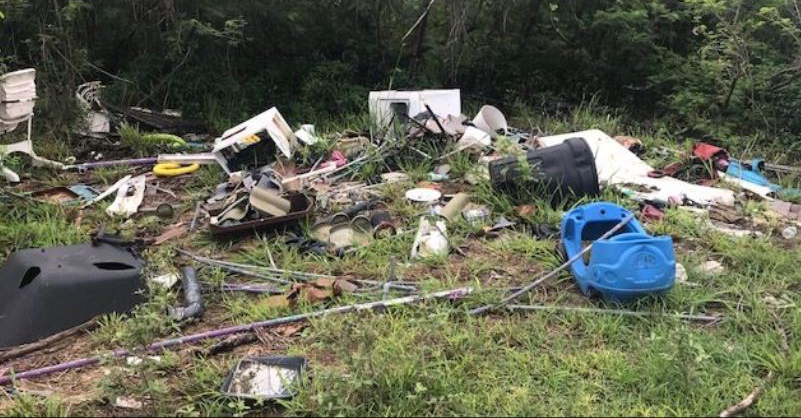NOAA Commemorates Asian American and Native Hawaiian/Pacific Islander Heritage Month
The Takeaway: Community pride and the centuries-old practices of Native Pacific Islanders inform several NOAA-supported projects to protect this region’s natural treasures.

In a recent proclamation, U.S. President Joseph Biden and Vice President Kamala Harris—the first person of South Asian descent to hold the office—emphasized the many ways that “Asian Americans, Native Hawaiians, and Pacific Islanders make our Nation stronger.” Native communities on the Pacific Islands feel a responsibility to care for lands and waters, generation to generation. The following projects spotlight the region’s cultural pride and ancestral stewardship traditions. These projects are aided by NOAA’s Office for Coastal Management and include partners from nonprofit organizations, the private sector, and all scales of government.
In Hawaii’s Heʻeia community on the island of Oahu, a community fishpond degraded by invasive grasses and mangroves is being restored to its former vitality. Students and teachers play a part, as they receive hands-on tutorials in Native Hawaiian practices that promote watershed health. The leader of this multi-partner project, NOAA’s Bay Watershed Education and Training program, reached 7,527 students, 5,371 teachers, and 1,600 community members through various projects over two years. NOAA’s Heʻeia National Estuarine Research Reserve, located in the same community, hosts and conducts a number of research projects informed by traditional practices, some of which are outlined in the largest collection of scientific publications by Native Hawaiians.
Honoring Samoan heritage
In American Samoa, a fautasi is a long canoe, part of a traditional way of life that includes dense coastal villages where open, thatched-roof homes are highly vulnerable to cyclone and tsunami damage. During the annual Fautasi Coastal Challenge, 40 to 60 rowers in each long canoe power through the waters to highlight Samoan pride as well as cyclone and tsunami preparedness, resource conservation, and other coastal management tips. The multi-partner event was established by the American Samoa Coastal Zone Management Program.

Elsewhere in American Samoa, a combination of community volunteers, schoolchildren, and rain garden experts installed natural infrastructure that helps stabilize shorelines and minimizes runoff, erosion, stormwater damage, and harm to coral reefs. NOAA’s Coral Reef Conservation Program helped lead this multi-partner effort.
Another initiative in the territory awards competitive scholarships to marine science students at American Samoa Community College, with the aim of closing gaps in local coral reef research and encouraging more Samoan students to pursue science fields. The Coral Reef Conservation Program funds the scholarships with the assistance of several partners.
Protecting island assets

Community pride was on display in the Commonwealth of the Northern Mariana Islands as volunteers helped to clear 9,000 pounds of coastal and marine debris in 75 locations on three islands—all while following strict health and safety pandemic protocols. Outreach tips also encourage changes in cigarette-disposal behavior, the commonwealth’s number-one coastal litter problem. The Commonwealth of the Northern Mariana Islands’ Division of Coastal Resources Management was a major partner in the effort.
In southern Guam’s Manell watershed, 200 Guam volunteers planted 10,000 trees to help protect reefs, shorelines, and ecotourism. The new forest will tamp down the area’s destructive cycle of grass fires, erosion, and runoff, which damages the shoreline while blocking sunlight and smothering reef organisms. Guam’s Coastal Management Program co-led the effort. Elsewhere on Guam, the first class of volunteer conservation reservists pledged to guard the territory’s plants, animals, and waterways, in an initiative led by the Guam Department of Agriculture and supported by a NOAA Coral Reef Conservation Program grant.
To learn more about these and other projects in the U.S. Pacific Islands, view the Office for Coastal Management site or email coastal.info@noaa.gov. (2021)
Partners: American Samoa Coastal Zone Management Program; American Samoa Community College-Land Grant Extension; American Samoa Coral Reef Advisory Group; American Samoa Department of Marine and Wildlife Resources; American Samoa Visitors Bureau; Commonwealth of the Northern Mariana Islands’ Divisions of Coastal Resources Management, Environmental Quality, and Solid Waste; Faga‘alu Village, American Samoa; Fletcher Construction Company; Guam’s Coastal Management Program and Forestry Division; Horsley Witten Group; Hawai‘i Community Foundation; Hawaiian Airlines; Kazoo ʻŌiwi; Kua‘aina Ulu ‘Auamo; Micronesia Islands Nature Alliance; National Fish and Wildlife Foundation; National Marine Sanctuary Foundation; National Park Service; North American Association for Environmental Education; Ocean Conservancy; Samoa Maritime Company; The Nature Conservancy; University of Hawai‘i Institute of Marine Biology and Sea Grant College Program; and NOAA’s Bay Watershed Education and Training program in the Office of Education, Coral Reef Conservation Program, Fisheries Pacific Islands Regional Office, Heʻeia National Estuarine Research Reserve, National Coastal Zone Management Office, and Office for Coastal Management.
PRINT